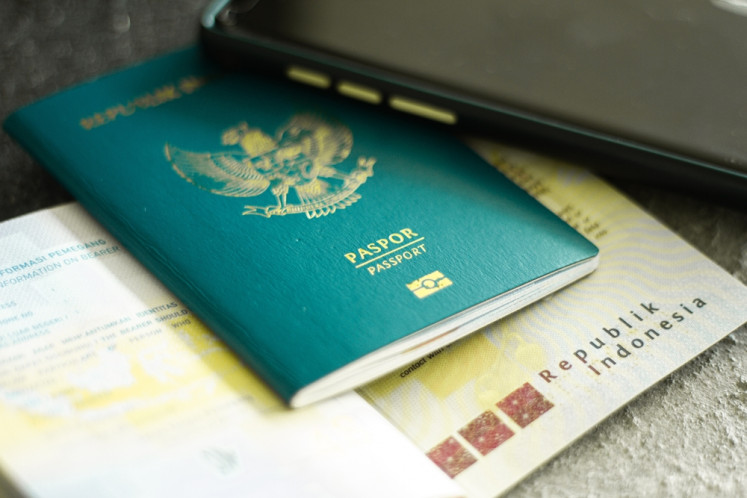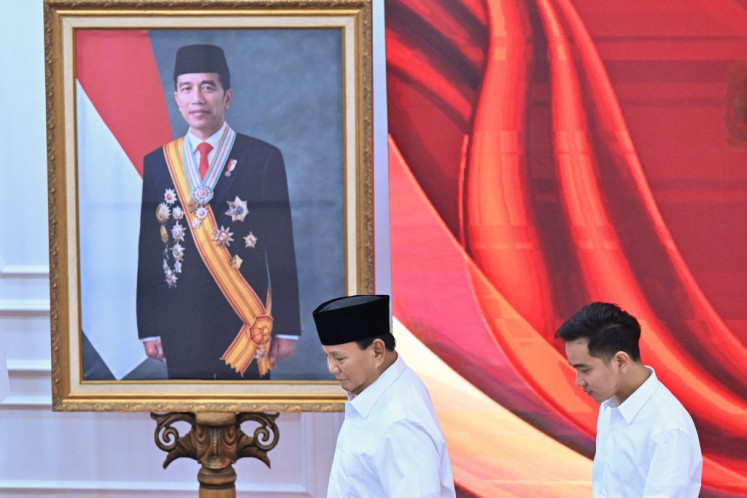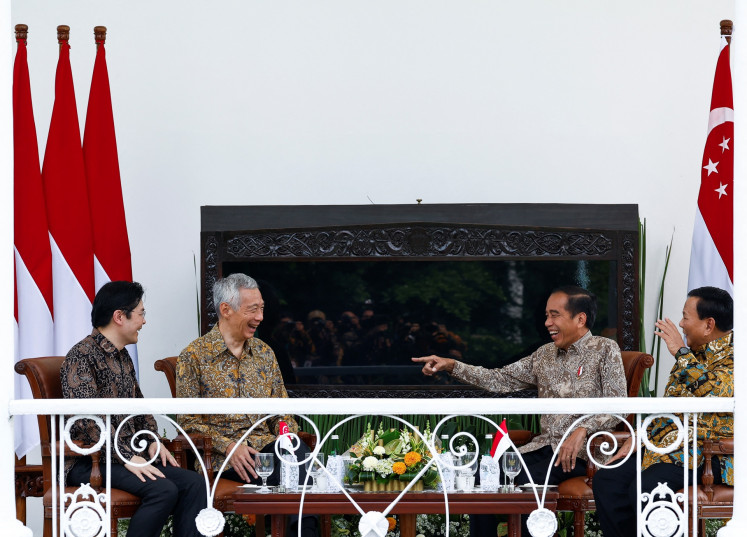Indonesia's opportunities, challenges from electric vehicles
Being home to important minerals, Indonesia has the potential to be part of the global supply chain for EVs.
Change Size

F
ormed in November 2020, the Zero Emission Vehicle Transition Council (ZEVTC) — an international forum focusing on global cooperation in the transition to zero-emission vehicles — has announced key priorities to support the transition to zero-emission vehicles. These include charging infrastructure, fuel efficiency standards and regulations, pace of the transition and technology choices for zero-emission heavy duty vehicles and ensuring the ZEV transition is truly global. The last one will include identifying opportunities for coordinated action on supply chains for electric vehicles (EVs) including EV batteries.
These key priorities also align with Indonesia’ interest in taking a role in the supply chain of renewable technology and energy. At the Leaders’ Summit on Climate in April, Indonesia opened up investment in energy transition through the development of biofuels, the lithium battery industry and EVs. Also in a speech in August, President Joko “Jokowi” Widodo highlighted that the transformation toward new and renewable energy (NRE), as well as the acceleration of a green technology-based economy, would be an important change in the Indonesian economy.
At the global level, road transportation accounts for over 10 percent of global greenhouse gas emissions, and the total emissions are rising faster than any other sector. In Indonesia, emissions from transportation accounted for 8 percent of total emissions, the second-largest contributor of emissions. Indonesia is the largest motorcycle market in ASEAN. Thus, the efforts to tackle climate change should include measures to address emissions from transportation.
To support this, the government is currently targeting the use of EVs by 2050. This was preceded by a plan to completely stop selling fossil-fueled motorcycles by 2040. Indonesian motor vehicle manufacturers have also expressed support for the development of environmentally friendly technologies. One method is by incorporating selective catalytic reducers in diesel engines. This technology can reduce the most harmful nitrogen dioxide emissions by up to 80 percent.
As demand for EVs increases, it will drive up the demand for nickel. Nickel is the critical raw material for the batteries used in EVs. One of the most widely used batteries in EVs is the nickel-manganese-cobalt (NMC). The most recent NMC technology, NMC 811, will produce the latest technology with the use of nickel ore up to 80 percent, 10 percent manganese and 10 percent cobalt. A high nickel component in batteries is important as it improves the capacity to store electricity. However, a high nickel component means greater mining activities that potentially damage the environment.
Being home to important minerals, Indonesia has the potential to be part of the global supply chain for EVs. For example, nickel, bauxite and copper are the main minerals in EV development. This is a significant opportunity for Indonesia to be part of the global manufacturing chain of EV components. The State-Owned Enterprises Ministry estimates that the world battery market will reach 777 GWh in 2027. Meanwhile, Indonesia is estimated to need a battery capacity of 9.8-11.9 GWh in 2029-2030. To meet the demand for EVs and their devices, we need to build a strong ecosystem covering linkages across upstream and downstream industries.
It is important to note that the EV ecosystem is very complex and large. It requires huge investment for building up the ecosystem in Indonesia. This includes the supply of NRE electricity, raw materials, a component industry, original equipment manufacturer (OEM) industry, the EV market, the provision of charging infrastructure and a recycling industry. Other support for the ecosystem includes the government issuing policies, banks providing capital and research and development institutions assisting in the feasibility of the ecosystem.
Up to now, the government has been accommodative of this development. The government inaugurated the construction of an electric car battery factory in September, which will start production in 2023. This factory has a first-stage production capacity of 10 GWh, it can produce approximately 150,000 batteries. Components and raw materials for battery production use nickel, cobalt, manganese and aluminum, 90 percent of which is nickel.
Another opportunity is job creation in the green sector. With the construction of an EV battery factory, the labor market will be on the rise again. It will provide green jobs, increase income and improve productivity in the medium and long run. We may expect growth from these green investments.
For the banking sector, the development of the green ecosystem could provide unique opportunities. The development of battery manufacturers will definitely require capital for operations, investment credit and provision of employee payroll. Banks that allocate loans to these sectors will be considered green financing. In that context, regulators must set rules and regulations that will be in accordance with green-financing policies. From the government's perspective, it is necessary to draft a policy regarding the standards of EVs and their components that are globally appropriate. So that the national production of EVs and batteries can compete on the global market.
At the moment, EV prices are still high and this is the major challenge for the use of EVs. To make them relatively affordable, the government is aggressively providing incentives to EV manufacturers. In addition, charging stations are still rare and the supporting infrastructure is inadequate. Meanwhile many Indonesians still rely on their cars for transportation. Thus fiscal incentives for private sector development of EV infrastructure will be important as well.
The European Union is the top region for supportive EV infrastructure. Based on the data, EV charging stations in the world in 2020 amount to 922,216 units for publicly available slow-charge and 385,678 for publicly available fast-charge. The EV charging stations in the EU account for a total of 247,798 units for publicly available slow-charge and 38,262 for publicly available fast-charge. Meanwhile in Asia, China has 498,000 publicly available slow-charge and 309,000 publicly available fast-charge stations. In third place is the United States with a total of 82,263 publicly available slow-charge and 16,718 publicly available fast-charge stations.
Indonesia should catch up quickly with the development of EV infrastructure to meet its global commitment to reducing emissions, particularly from transportation. With its mineral resources and the right policies, Indonesia could be part of the global green technology and create decent jobs as well. This is the future that all of us dream of.









